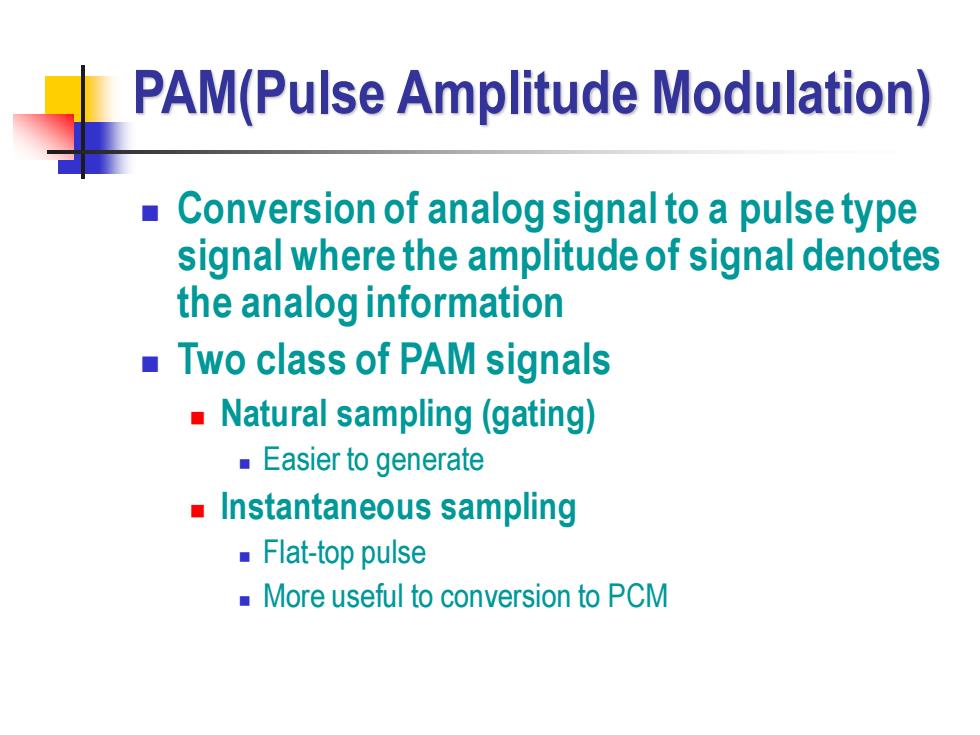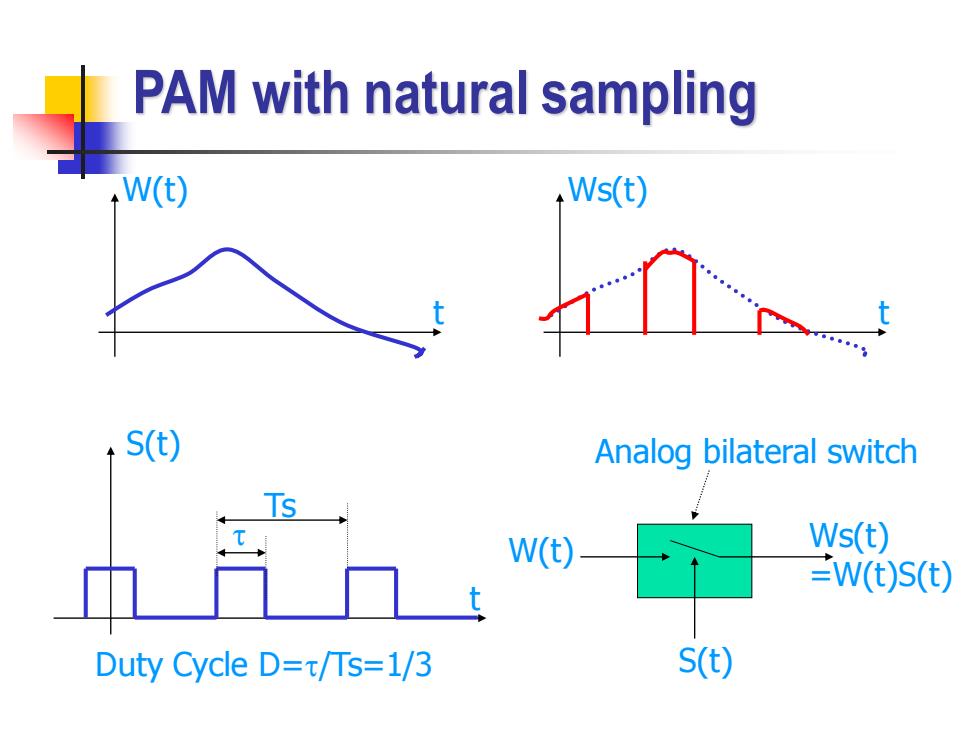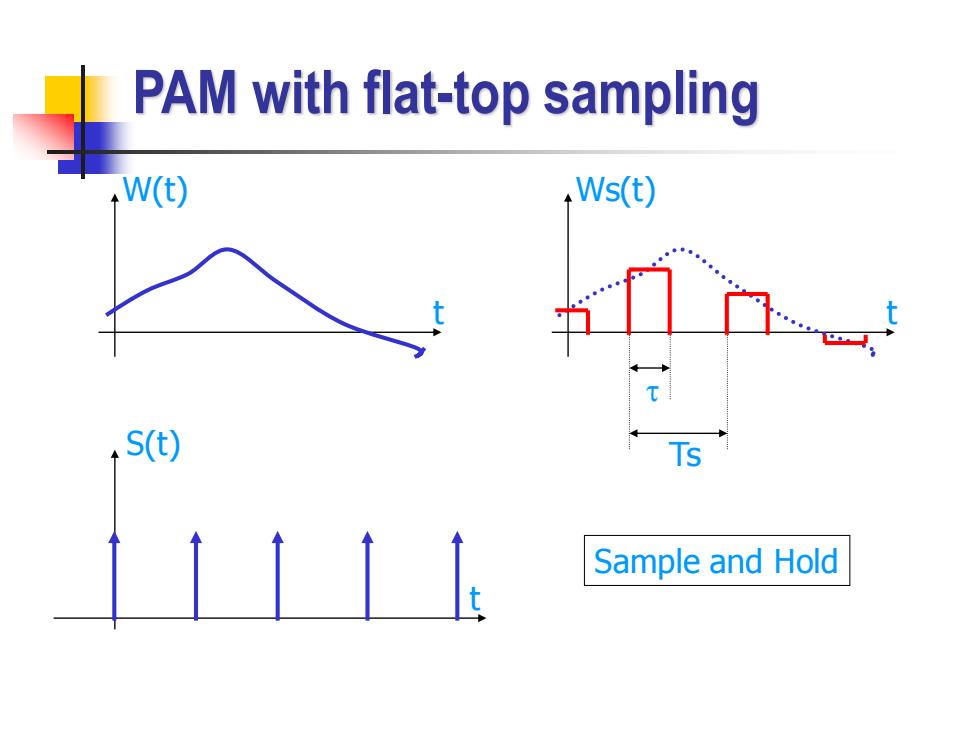
Analog-to-Digital Conversion PAM(Pulse Amplitude Modulation) PCM(Pulse Code Modulation)
Analog-to-Digital Conversion PAM(Pulse Amplitude Modulation) PCM(Pulse Code Modulation)

PAM(Pulse Amplitude Modulation) ■ Conversion of analog signal to a pulse type signal where the amplitude of signal denotes the analog information Two class of PAM signals Natural sampling (gating) ■Easier to generate a Instantaneous sampling Flat-top pulse More useful to conversion to PCM
PAM(Pulse Amplitude Modulation) ◼ Conversion of analog signal to a pulse type signal where the amplitude of signal denotes the analog information ◼ Two class of PAM signals ◼ Natural sampling (gating) ◼ Easier to generate ◼ Instantaneous sampling ◼ Flat-top pulse ◼ More useful to conversion to PCM

PAM with natural sampling W(t) .Ws(t) S(t) Analog bilateral switch W(t) Ws(t) =W(t)S(t) Duty Cycle D=t/Ts=1/3 S(t)
PAM with natural sampling W(t) t S(t) t Ts Duty Cycle D=/Ts=1/3 Ws(t) t W(t) S(t) Ws(t) =W(t)S(t) Analog bilateral switch

Spectrum of PAM with natural sampling Spectrum of input analog signal Iw(f)I ■Spectrum of PAM ▣D=13,fs=4B ■B=3fs=12B -BB IWs(f) D=1/3 D sinπtf πrf -3fs -2fs -fs-B B fs 2fs 3fs
Spectrum of PAM with natural sampling ◼ Spectrum of input analog signal ◼ Spectrum of PAM ◼ D=1/3, fs=4B ◼ BT= 3fs = 12B |W(f)| -B B f 1 |Ws(f)| -3fs -2fs -fs -B B fs 2fs 3fs D=1/3 sin f D f sin ( )s n f D W f nf f =− −

PAM with flat-top sampling W(t) .Ws(t) S(t) Ts Sample and Hold t
PAM with flat-top sampling W(t) t S(t) t Ws(t) t Ts Sample and Hold